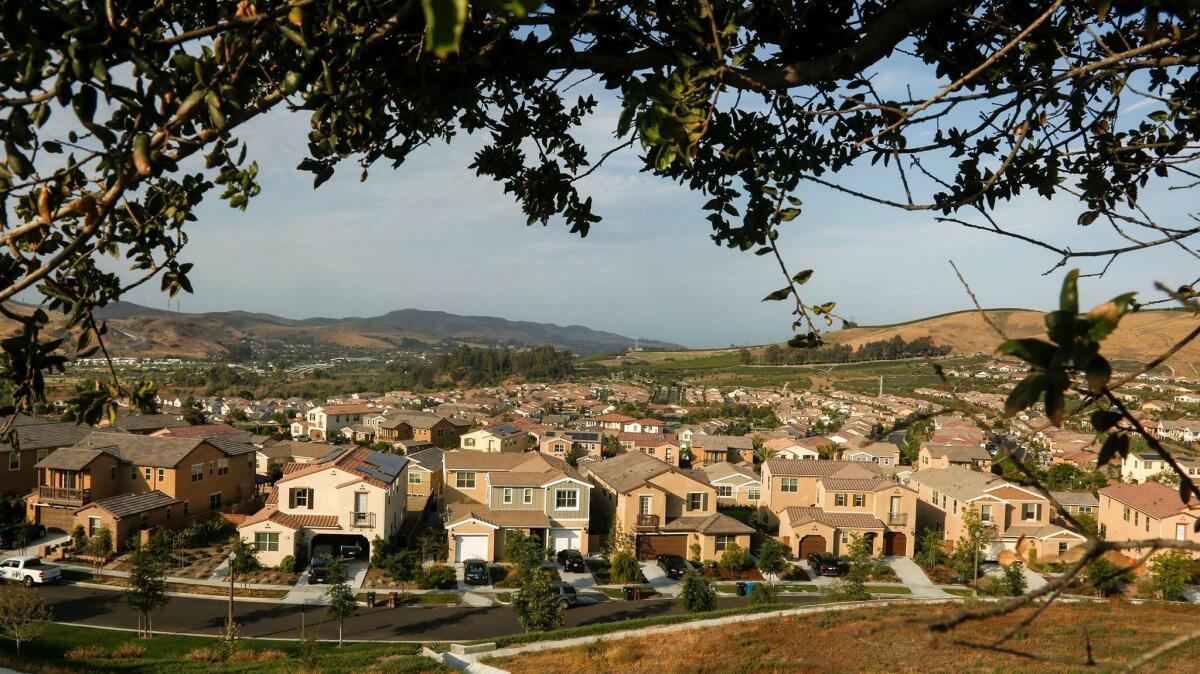Commentary: Ease the O.C. housing crisis by allowing development on small lots

The Orange County housing story continues to read the same: low supply, high demand and increasing costs. The Orange County Business Council puts the housing supply shortfall at 50,000 to 62,000 units per year. And, just recently, the O.C. Register reported that home listings were at a four-year low in Orange County and throughout Southern California.
At the state level, the Department of Housing and Community Development’s recently released Housing Assessment Report predicts that California will need 1.8 million units by 2025, or 180,000 new units annually, to meet population and household growth.
Undoubtedly, the cost to buy a home continues to rise. In March, the Saddleback College South Orange County Economic Report placed the 2016 O.C. median home price at $728,500, with the average sales price at $956,186 — predicting up to a 5% gain in 2017.
It should come as no surprise that home ownership rates are at an all-time low, with Orange and Los Angeles counties facing the lowest in the nation. While many factors have contributed to our current crisis, let’s not ignore the simple concept of supply and demand, and figure out how to increase supply.
So, how do local policymakers work to generate more for-sale housing as available land remains scarce, and the American dream of owning a home continues to remain just that — a dream? One solution: small lot development.
Southern California is no stranger to the small lot home. Passed in 2005, Los Angeles was already struggling with a lack of land, attainable housing and a twiddling home ownership rate and looked to a smaller, innovative for-sale product to increase supply. In a nutshell, the city would subdivide lots within existing multifamily and commercial zones to accommodate detached townhomes that would allow buyers to own the unit and land underneath. According to the city, from 2006-13, in a recessionary economic climate, more than 160 subdivision cases were filed, resulting in the approval of over 1,500 individual lots.
In Orange County, Costa Mesa recognized similar characteristics and in 2014 passed the first small lot ordinance in the county. The code change aimed at creating flexibility for developers by removing the required minimum distance between buildings, reducing setbacks and open space requirements, and by allowing live/work units on land zoned for multifamily units — all without increasing density.
This O.C.-style small lot has seemingly done well, as you will easily spot the modern homes driving through the streets of Costa Mesa. According to the city, 120 units have been approved since the ordinance’s inception, with more in the process.
Townhomes and condominiums have always been a practical way to increase attainable for-sale housing, but with higher-than-average fees, financing costs and insurance premiums, they can still be difficult to build and sell. The small lot ordinance creates a townhome-style product with the same benefits and ownership perks as your traditional single-family ranch home, making it a great product for the first-time buyer. Small lots are efficient, create less of a footprint and can be built on underutilized commercial and industrial zones as many businesses look to the online market, subsequently reducing traffic in these areas.
Homeownership rates may continue to struggle if nothing is done. Now is the time for local policymakers and elected officials to look at innovative ways to increase for-sale housing supply by amending their building codes to accommodate the small lot development.
STEVEN LaMOTTE is the chapter executive officer for the Building Industry Assn., Orange County Chapter.
All the latest on Orange County from Orange County.
Get our free TimesOC newsletter.
You may occasionally receive promotional content from the Daily Pilot.



